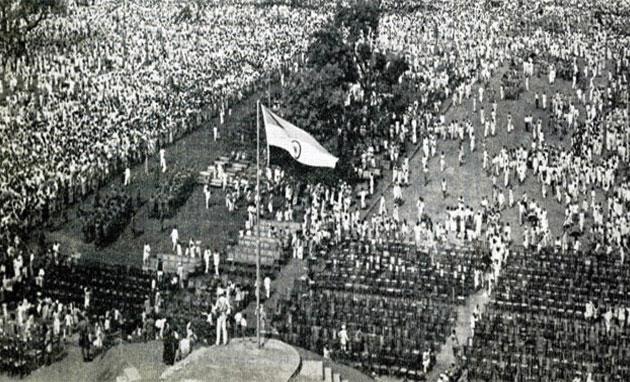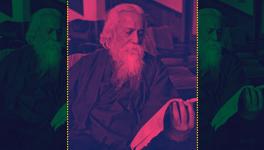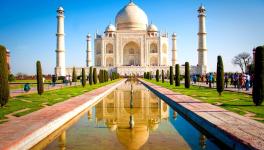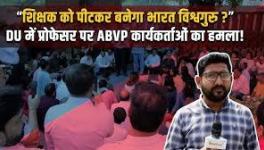Role of Muslims in India’s Freedom Struggle

Image for representational purpose. Credit: News Nation English
For all patriotic Indians, it is the worst of times, it is the age of foolishness, it is the epoch of incredulity, it is the season of darkness, it is the winter of despair, we have nothing before us, to paraphrase an epic description of the revolutionary tumult of the French Revolution, by Charles Dickens in his novel The Tale of Two Cities. However, the current situation in India is not about a revolutionary tide. The torrents that India faces today are intensely counter-revolutionary.
The forces of Hindutva and its allies are ensconced in power and are hell-bent on overturning the Indian constitution and its Preamble. Their chief picking is to undermine secularism. And to do so, they have chosen to demonise the Indian Muslims.
As you read this article, hundreds and thousands of Indians are being fed the communal pie through WhatsApp University about the inherent ‘anti-nationalism’ of the Indian Muslims. However, even a cursory glance at history would reveal that Indian Muslims not only played a stellar role in the freedom struggle but happily laid down their lives at the altar of the anti-colonial national struggle.
The Great Revolt of 1857 was the mightiest joint effort of the Hindus and Muslims under the leadership of the Mughal emperor Bahadur Shah Zafar to dislodge the British from India. Zafar was chosen as the leader of the Revolt by the overwhelmingly Hindu upper-caste sepoys (popularly known as poorbeahs) recruited chiefly from the Eastern regions of India. Although the Revolt failed because of myriad reasons, it was the Muslim community that was singled out by the British as the conspirators-in-chief. The tragedy that struck the Muslims of Delhi, which was the epicentre of the Revolt, was gruesome and ghastly.
All Muslims, barring a few rich households, were shunted out of the walled city and could not return to the city till November 1859. Important Muslim shrines were desecrated by the British as an insulting token of revenge. There was a talk of demolishing the Jama Masjid, the Akbarabadi Masjid was destroyed, the Fatehpuri Masjid was sold to the pro-British Lala Chunna Mal and the Zinat-ul-Masjid was used as a bakery.
After the embers of the Revolt cooled, the British became aware of a conjoint effort by Hindus and Muslims motivated by a common anti-British sentiment in future. As a result, the system of mixed regiments in the British army was disbanded and replaced by the 'class company model' of mixed ethnic groups.
In the next phase of British rule, a small number of rich and educated Indians were given consultative yet impotent memberships in the Legislative Councils. The Bengal Legislative Council that came into being in 1862 had four members: Raja Partap Chand of Burdwan, Ramaprasad Roy, son of Rammohun Roy, Prasanna Coomar Tagore, cousin of Dwarkanath Tagore, and a lone Muslim member Maulvi Abdul Latif. From the very beginning, the Council fell prey to the interests of the bourgeoisie-landlord combine.
One of the first tasks that the Council set itself to was to bring about a bill that strived to amend Article X of the Tenancy Act of Bengal 1859, under which the poor Bengali tenantry and sharecroppers got some relief from exorbitant exactions by the 'permanently settled' landlords. Out of all the four Council members, it was only Maulana Abdul Latif who voted against the egregious bill and the rest sided with the British planters.
Within two years of the founding of the Indian National Congress (INC) in 1885, Badruddin Tyabji of Bombay became its President. Both Badruddin and his brother Qamruddin Tyabji were deeply involved in laying the founding of the INC and were among the four Muslim delegates elected to the first Congress meeting in 1885. It is also interesting to note that Badruddin Tyabji was instrumental in passing the motion that stated that the ‘INC would never approve the discussion of a subject without the unanimity of its Hindu and Muslim delegates’.
Even during the Swadeshi period, Muslim swadeshi leaders were as patriotic as their Hindu brethren. If we set aside the dubious role of prominent landed elements such as Nawab Salimullah of Dacca, we will find immense participation of ordinary and plebian Muslims. The Muslim peasantry of Pabna and Khulna displayed heart-warming scenes of fraternisation during a rally in July 1905. In the same year, on September 23, Hindu-Muslim students of Calcutta marched in unison and organised a ten thousand-strong rally where the Muslim swadeshi Abdur Rasul declared, ‘‘We both Hindus and Mohammadans here belong to the same mother country—Bengal.’’
In Hooghly, the calls of Bande Mataram and Allah-ho-Akbar mingled. Muslim Swadeshi enterprises such as Ghaznavi’sUnited Bengal Company, the Bengal hosiery, and the Bengal Steam Navigation Company played a vital role during the movement. Abul Hussain and Liakat Ali were extremely prominent agitators during the great East India Railway strike of 1906. During the strike, the Muslim locomotive drivers took pledges on the Koran and walked out in their turn in December 1907. The strike went on till the middle of February and was only broken with the help of European drivers loaned from the army.
After the First World War, when the era of mass politics was inaugurated in India, Muslims were not at all lacking in participation. The resolution for complete independence (Poorna Swaraj) was first moved at the 1921 Ahmedabad session of the Indian National Congress by Maulana Hasrat Mohanialong with Swami Kumarananda of the Communist Party of India. B.T. Ranadive records in his article India’s Freedom Struggle published in the journal Social Scientist that ‘‘it was Gandhi who led the opposition to it’’. Similarly, in June 1922, a joint session ofthe Khilafat Committee and Jamiat-ul-Ulema held at Lucknow passed a radical resolution that stated, “The best interests of India and the Muslims demand that in the Congress creed the term 'Swaraj' be substituted by the term 'Complete Independence’’. It should be remembered that the Indian National Congress adopted the complete independence resolution only in December 1929.
The nucleus of the Communist Party of India formed in Tashkent in 1920 consisted mainly of Muslim hijratis who left the fold of the foundering Ottoman Caliphate and made socio-economic emancipation of the Indian masses their goal. Therefore, some of the early Muslim communists went against the euphoria of the age and posed difficult and far-sighted questions to the leadership of Congress. Muzaffar Ahmad, fondly known as Kakababu, was one of the most dedicated members of the Communist Party of India, questioned the concept of Hindu-Muslim unity on the grounds that the leaders who forged this alliance erroneously assumed that the interest of the ordinary people could only be expressed in the idiom of religion.
He implicated the leaders of such movements of dividing the people into communal lines and creating a mentality of communal separation (sampradayik bhedbuddhi), despite the call for communal unity, precisely because of the singular premium put on religious identities and leaving other considerations such as their class and relation to the means of production, out of the question. Kakababu also grasped the class question behind the communalisation of politics.
He argued that communalism from above was a double-edged strategy of the ruling and possessing classes aimed at maximising the internal bargaining position of various upper-class factions while weakening the collective bargaining power of the poor, as the latter responded to communal politics only because they faced dispossession and deprivation in the then existing situation.
This latter point makes Kakababu’swarning extremely relevant for today’s India.
Within the Congress, there was no dearth of tall, and in the case of the great Khan Abdul Ghaffar Khan, literally ‘tall’ Muslim leaders. In September 1926, Khan established the Khudai Khitmatgars, an overwhelmingly Pashtun corps whose membership was open to Hindus, Christians, and Sikhs. The members were also called Red Shirts, but unlike the fascist Black Shirts and the Rashtriya Swayamsevak Sangh White Shirts of today, they did not carry a weapon, not even a lathi. They only spread the message of peace, unity, and non-violence.
It was during the salt march that Khan became most proactive. His subsequent arrest led to the killing of two to three hundred Khudai Khitmatgars. The violence led him to adopt the creed of non-violence in toto. On Gandhi’s call, he went to Bardoli, where he linked non-violence to Islam. Maulana Abul Kalam Azad remained one of the chief Muslim leaders of the anti-colonial nationalist movement whilst working within the Congress. At 35, he served as the youngest President of the Indian National Congress in 1923. Along with this, he was made to suffer multiple incarceration terms by the colonial state.
Even the revolutionary movement of India is adorned by the figure of Shaheed Ashfaqullah Khan, who gave up his life whilst being a member of the Hindustan Republican Association (HRA) for the cause of India’s freedom.
The patriotic slogan of Jai Hind was popularised by Zain-ul-Abideenalias Abid Hasanwho was a close associate of Netaji Subhash Chandra Bose and an officer of the Indian National Army (INA).
To conclude, it is impossible to recount the names of hundreds and thousands of Indian Muslims who fought on the streets against the British empire. However, the veracity of this claim could be asserted by the fact that many of them chose to stay put in India, which they considered their only home. India continues to remain their home and would forever remain so, no matter how much the forces of Hindutva try to re-write history.
The writer is a research scholar with the Department of World History, University of Cambridge. The views are personal.
Get the latest reports & analysis with people's perspective on Protests, movements & deep analytical videos, discussions of the current affairs in your Telegram app. Subscribe to NewsClick's Telegram channel & get Real-Time updates on stories, as they get published on our website.























